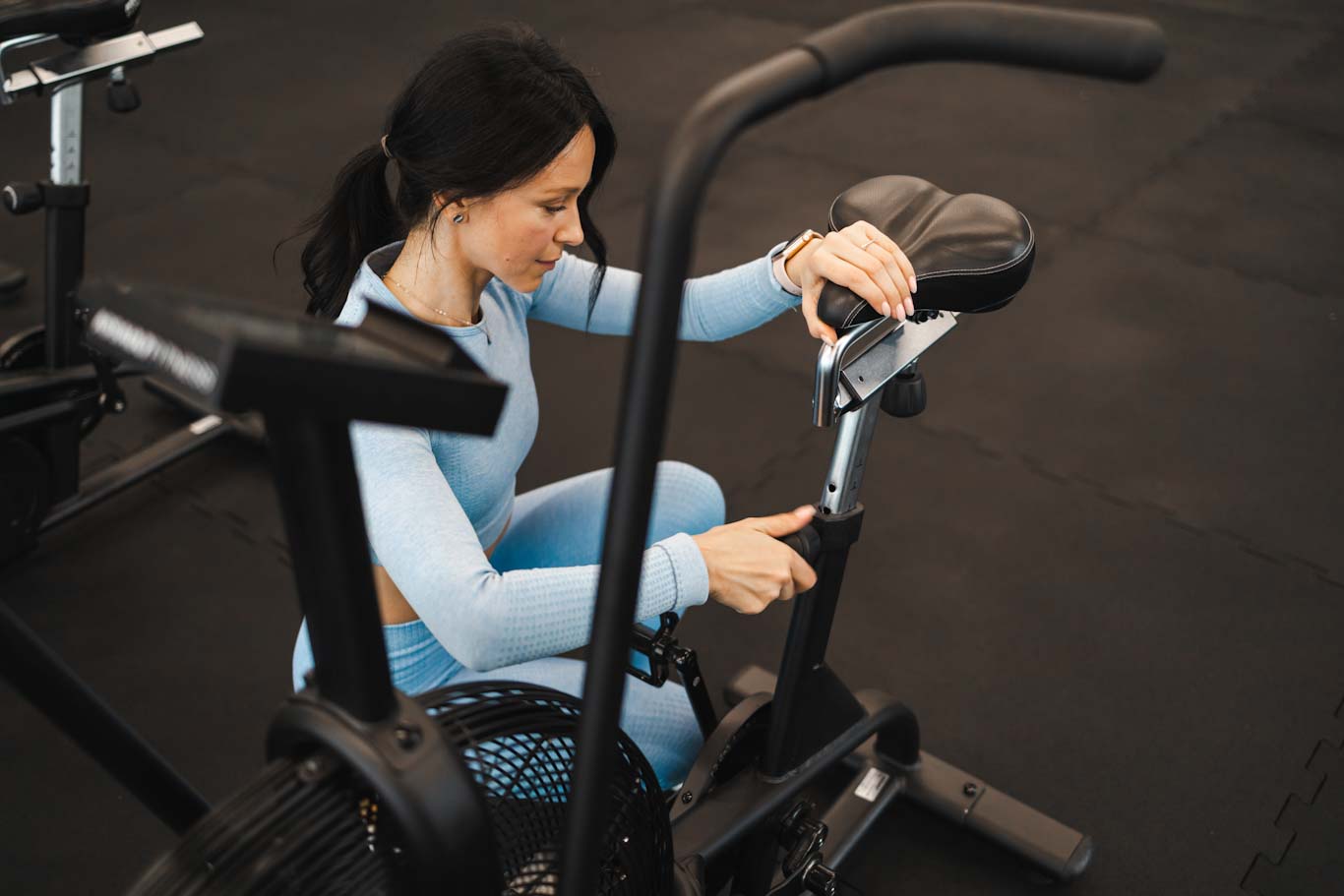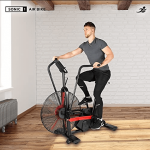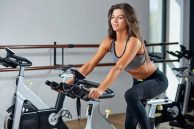The Science Behind Resistance: Understanding Indoor Bike Settings

In the realm of indoor cycling, there’s a silent yet powerful force that propels you toward your fitness goals: resistance. The control you have over resistance settings on your indoor bike is what transforms a mere pedal into a challenging and invigorating workout. In this comprehensive guide, we’re delving into the science behind resistance, unravelling the mysteries of stationary bike settings, and arming you with the knowledge to optimize your indoor cycling experience.
The Basics of Indoor Bike Resistance
Before we embark on this journey of understanding resistance, let’s get back to basics. Resistance, in the context of indoor cycling, refers to the force you pedal against. It’s what transforms a simple spin into a muscle-sculpting, heart-pounding endeavour. But why is resistance so crucial?
Resistance serves as the catalyst for muscle engagement, cardiovascular conditioning, and calorie burn. By increasing the force required to pedal, you challenge your muscles to work harder, making your workout more effective and efficient. But how do you navigate the world of resistance settings, especially if you’re new to the game?
Stationary Bike Settings for Beginners

If you’re just stepping into the world of indoor cycling, fear not. Stationary bike settings for beginners are designed with your comfort and progress in mind. As you saddle up on your indoor bike, you’ll encounter two primary types of resistance settings: manual and magnetic.
Manual vs. Magnetic: Decoding Exercise Bike Resistance Settings
Manual Resistance: Embrace the Control
Manual resistance, as the name suggests, puts you in the driver’s seat. By turning a knob or dial, you control the level of resistance you pedal against. This type of resistance setting is straightforward and gives you the ability to fine-tune your workout intensity. It’s an excellent choice for those who want a hands-on approach to their workout and enjoy the tactile sensation of adjusting resistance on the fly.
However, manual resistance requires a bit of trial and error, especially for beginners. It might take a few sessions to gauge the optimal resistance level for your fitness level and workout goals. But fear not – this learning curve is part of the journey, and it empowers you to customize your experience.
Magnetic Resistance: The Future of Smooth Riding
Enter magnetic resistance, a technological marvel that’s rapidly becoming the gold standard for indoor cycling. This type of resistance operates through magnets, creating a seamless and silent transition between resistance levels. Unlike manual resistance, there are no knobs to turn; instead, you adjust settings digitally through the bike’s console or a connected app.
Magnetic resistance offers a host of advantages. Firstly, it provides a smoother and quieter ride, allowing you to focus solely on your workout without the distraction of mechanical noise. Secondly, the precision of magnetic resistance settings ensures consistent and accurate resistance levels, making it easier to track your progress and replicate previous workouts.
Navigating the Exercise Bike Resistance Settings
Understanding resistance levels is essential for optimizing your indoor cycling experience. When you adjust your bike’s resistance, you’re essentially controlling how challenging your workout will be. But how do you make sense of those numerical levels on your bike’s console?
Understanding Resistance Levels: The Key to Progress
Resistance levels are typically represented numerically, often ranging from 1 to 20 or more, depending on the bike model. Generally, the higher the number, the more challenging the resistance. But don’t let the numbers intimidate you – they’re your guideposts on the road to fitness.
For beginners, starting with a lower resistance level (around 5-8) allows you to focus on maintaining proper form and pedalling rhythm. As you become more comfortable, gradually increase the resistance to intensify your workout. Remember, the goal is to find that sweet spot where you’re pushing your limits without sacrificing proper technique.
Tailoring Resistance for Your Workout
One size doesn’t fit all when it comes to resistance settings. The beauty of indoor cycling lies in its versatility – you can tailor your workouts to your specific goals. Whether you’re aiming to boost your endurance, tackle interval training, or build strength, resistance settings are your secret weapon.
For endurance workouts, opt for a lower resistance level and maintain a steady pace for an extended period. Interval training involves alternating between high and low resistance levels, simulating hill climbs and sprints. To focus on strength building, crank up the resistance and pedal with force, engaging major muscle groups.
Fine-Tuning Your Indoor Bike Resistance
The art of indoor cycling doesn’t stop at simply adjusting resistance levels. There’s a method to the madness, and it involves fine-tuning your settings based on your body’s feedback.
Monitoring Intensity: Your Body Knows Best
While numerical levels are valuable, they’re not the only indicator of your workout’s intensity. Pay attention to your body’s cues, including your breathing and heart rate. During high-intensity intervals, you should feel your heart rate increase and your breathing become more labored. Conversely, during recovery periods, your heart rate should decrease as you catch your breath.
Gradual Progression: The Path to Success
As your fitness improves, don’t be afraid to step up your resistance game. Progressive overload – gradually increasing resistance levels over time – is the secret to continual growth and results. Aim to challenge yourself just enough to avoid plateauing, but not so much that you compromise your form or risk injury.
Expert Insights: Trainer Recommendations for Effective Resistance Usage
Trainers in the fitness world are your guiding lights on the path to success. We have gathered some expert insights on how to make the most of indoor bike resistance settings.
“Optimal resistance isn’t just a number; it’s a feeling,” says Jessica Torres, a certified indoor cycling instructor. “Listen to your body and find that point where you’re pushing your limits without sacrificing form. It’s all about finding your personal sweet spot.”
“Effort is something I highly recommend familiarizing yourself with,” says Sydney Bueckert (Fitness Trainer CES, FNS, GPTS, NASM-CPT)
“To use your effort to gauge your resistance during your ride, think of your effort on a scale of 1-10. 1 being your easiest, and 10 being your hardest.”
Effort on a Flat Road – should be around a 5
Effort on a Jog – should be around a 6-7
Effort on a Hill – should be around a 7-9
More from Dana Simoneli (Sunny Fitness Trainer)
Recommended Product: Sunny Health & Fitness Exercise Bike
Overcoming Resistance Plateaus: Never Settle
In your journey with indoor cycling, you might encounter resistance plateaus – moments when your progress seems to stagnate. But fear not, for plateaus are merely steppingstones to greater heights.
To overcome plateaus, consider incorporating new resistance challenges. If you’ve been sticking to a particular resistance level, bump it up a notch. Experiment with different workout formats, like longer endurance sessions or more intense interval training. Your body thrives on variety and responds positively to new challenges.
Conclusion: Mastering the Art of Resistance
As you navigate the intricacies of indoor bike resistance settings, remember that you’re not just pedaling – you’re sculpting, challenging, and transforming your body. Whether you’re drawn to the tactile control of manual resistance or the seamless elegance of magnetic resistance, your indoor cycling journey is uniquely yours to embrace.
With the knowledge to adjust resistance levels effectively, you hold the key to unlocking a world of fitness possibilities. Embrace the challenge, heed your body’s cues, and revel in the progress you’ll make as you master the art of resistance. Your indoor bike is your canvas, and resistance is your brush – paint a masterpiece of strength, endurance, and success.
Further reading and references:
- Indoor Cycling Association – Resistance in Your Indoor Cycling
- Stages Cycling – How to adjust resistance
- Spinning® – Back to the Basics








